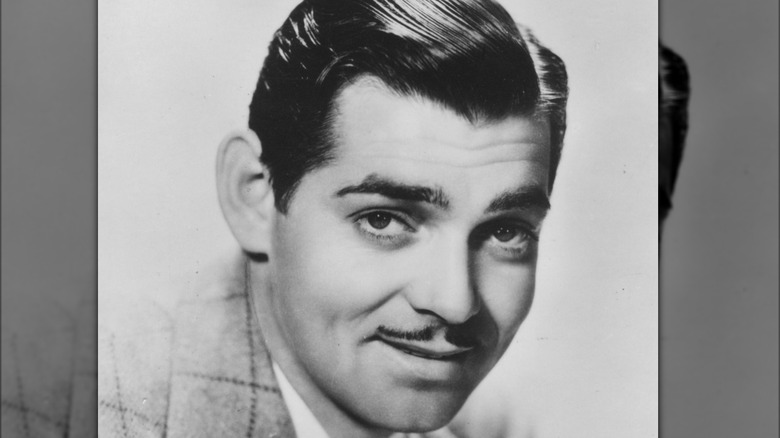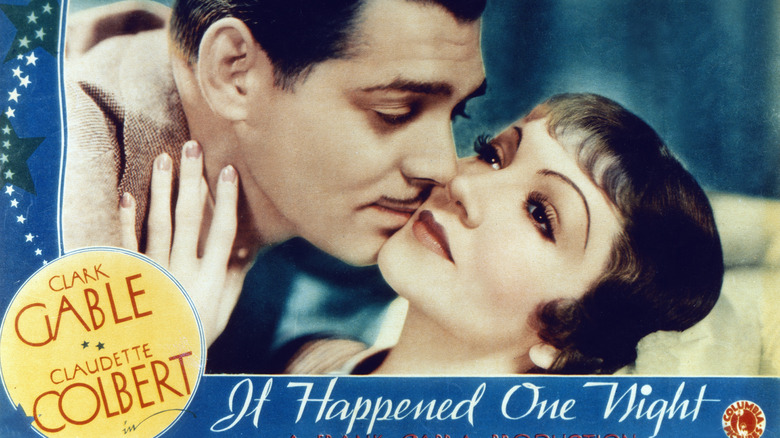Did Clark Gable Change Fashion With His Appearance In It Happened One Night?
In a now-famous scene in 1934's "It Happened One Night," Hollywood icon Clark Gable unbuttons his shirt to reveal he's not (gasp!) wearing an undershirt beneath. (You can watch Gable go bare-chested in a YouTube clip). This scene gave birth to a persistent urban legend: that Gable's undershirtless antics significantly altered the shopping habits of the U.S. male. "What happened was Clark Gable doffed his shirt to reveal his bare chest, prompting the second great crash of the Depression: in undershirt sales," William Troy, who served as The Nation's film critic from 1933 to 1935, wrote a year after the film debuted (via The Nation).
This claim has continued to circulate for more than 80 years. It was repeated in The New York Times in 1972 and the Herald Democrat in 2019. Some sources even put a number on it and contend that the scene caused undershirt sales to plummet by 75% (via "They Did What!? The Funny, Weird, Wonderful, Outrageous, and Stupid Things Famous People Have Done"). But is this anecdote supported by any actual evidence?
Shirtless claims
The truth is that no one ever presents any data to support the idea that Clark Gable's shirtless scene in "It Happened One Night" had any impact on overall undershirt sales, as Snopes pointed out. No one making this claim ever shares sales figures, complaints from industry executives, or first-hand accounts of men who chose to stop buying and wearing undershirts because they wanted to emulate Gable.
The other factor to consider is that correlation does not prove causation. Even if undershirt sales did fall around 1934, this could be because of something else entirely. For example, men might have simply decided it wasn't worth spending money on the item in the midst of the Great Depression. Or it could be that the scene reflected already changing fashions and sensibilities — that Gable's scripted actions were a symptom but not the cause of a bare-chested epidemic. While famous people can and do influence fashion trends, they tend to have the most impact on young people in cities. A 75% drop in sales would have required Gable to set off an almost universal trend, which isn't really realistic.

